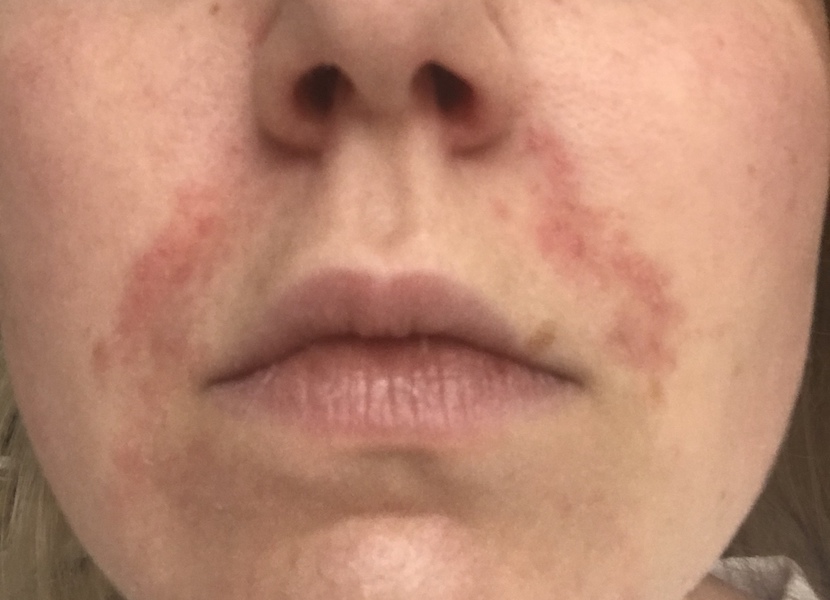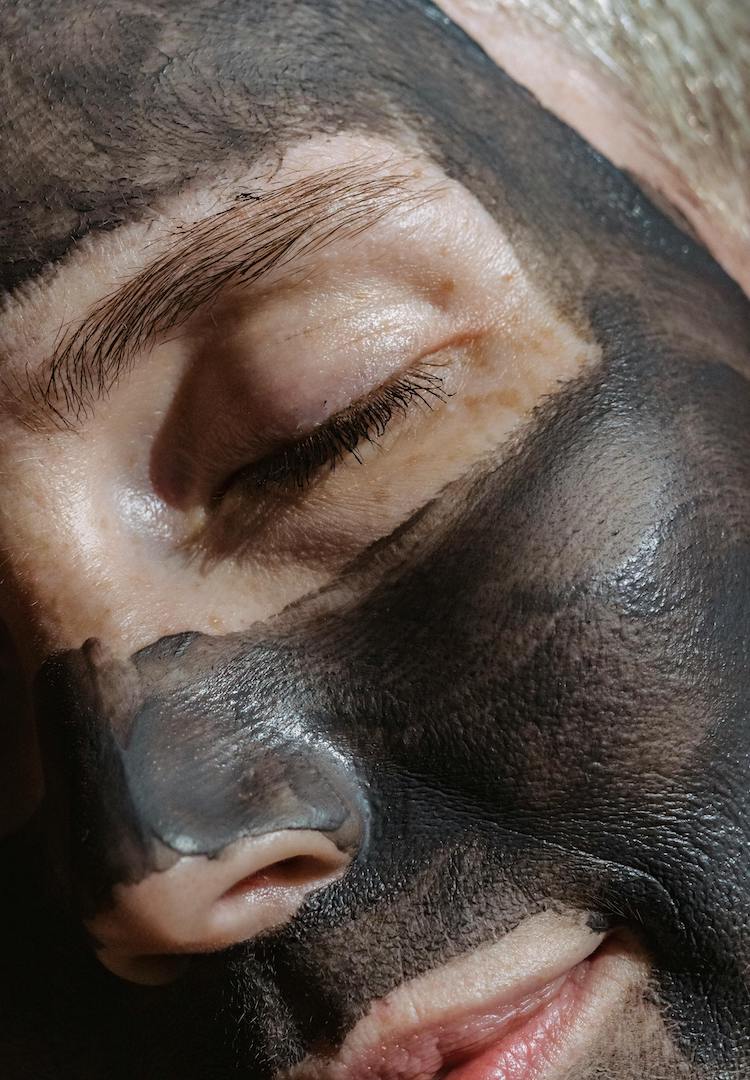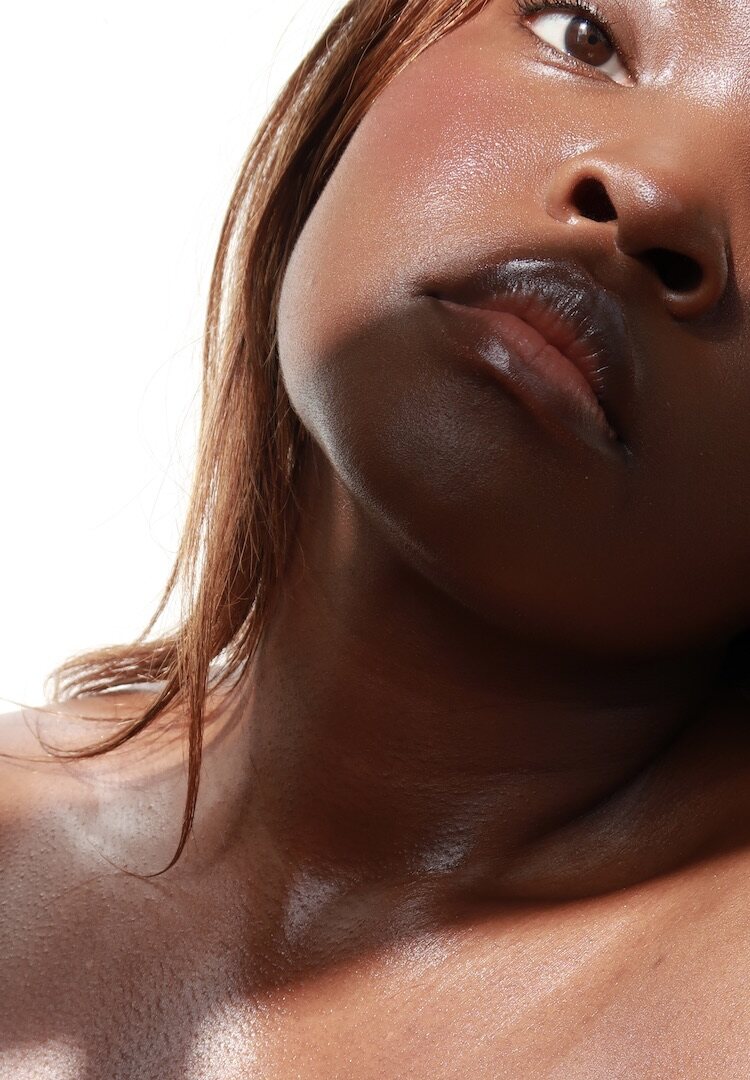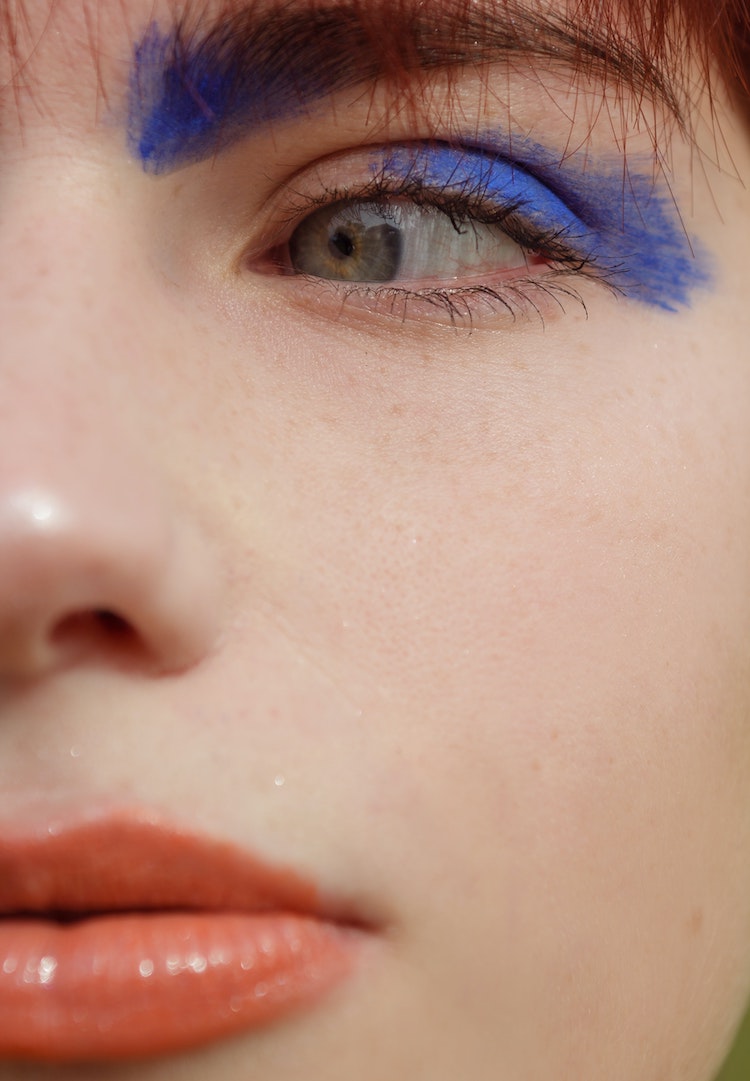I had no idea what perioral dermatitis was until it took over my face
WORDS BY KATE STREADER
Lessons I learnt the hard way.
I had never heard of perioral dermatitis before it took over my face for six consecutive months and how I contracted it, I’m still not entirely sure.
It was early into Melbourne’s first lockdown and pre-mask mandate when the angry skin condition first took up real estate on my face. It started off as some dry, flaky spots on the sides of my mouth that my makeup would cling to and emphasise.
We like nosy people. Don’t be shy, head to our Beauty section for more.
I figured my skin was telling me it needed something it wasn’t getting – so I did one of the worst things I could’ve done and decided to overhaul my entire skincare routine overnight. It was not good.
I’ve since learnt that you need to add new skincare products to your routine slowly. Patch testing them before slathering them over your whole face every morning and/or night is a very good idea. Suffice to say, I was a skincare novice.
The dry spots began to morph into what looked like breakouts. I did some research online and incorrectly self-diagnosed this as my skin purging – a normal result of my new skincare routine. I continued piling products onto my skin every morning and night, thinking I just had to persist through the purge.
My skin kept getting worse and eventually erupted into a full-blown rash that formed a red perimeter around my entire mouth. Thankfully we were in lockdown, so nobody really saw what was going on with my face. In addition to being unsightly, it was extremely itchy and painful.

Had it not been the height of the pandemic (at that point), I probably would’ve gone to the doctor. But by this stage, masks had become a requirement. It didn’t seem smart to go to a GP and remove my only form of protection to deal with a skin issue that might just resolve itself with a little patience.
While the masks were handy at hiding the rash when I ducked to the shops or went for my daily walk, they probably weren’t helping the situation. I went back to Dr Google for some more research and self-diagnosing. After reading about countless skin issues online, I came across something called perioral dermatitis – I knew I’d found the culprit.
But the cause and cure were impossible to nail down. The information available online was minimal and every article I did read seemed to contradict the one before it. However, the one piece of consistent advice I found was to cease the use of all skincare products immediately until the rash had cleared up.
This helped calm it down, but it was still incredibly dry and itchy. Not being able to drench it in moisturiser for some short-lived relief felt counterintuitive and somewhat torturous.
Eventually, I stumbled across a Facebook group dedicated to perioral dermatitis where sufferers could share advice and knowledge on the apparently common condition. Like the Google results, the posts were full of contradictory solutions that had cured some people and caused flare-ups for others.
It also terrified the hell out of me. It seemed some of the most common irritants for perioral dermatitis are coffee, wine, and spicy foods – three of my favourite things. I read posts from long term sufferers who had been wearing their rash for months and years at a time and realised this skin condition was a lot more serious than I had thought.
Finally, I did what I should’ve done months prior and made an appointment with my GP who confirmed my self-diagnosis, referred me to a dermatologist and prescribed me an antibiotic cream for the rash. I learnt that steroid creams are a huge no-no for perioral dermatitis.
I was lucky to have a GP who was knowledgeable about the condition and didn’t give me a script for a steroid-based cream which would have made it far worse. Lots of people in the Facebook group I’d joined were not so lucky.
Perioral dermatitis flare-ups can also be caused by sodium lauryl sulfate (SLS). Also known as sodium laurilsulfate or sodium dodecyl sulfate, it’s a common ingredient in toothpaste and face washes as it helps the products to lather. I switched to natural toothpaste and an SLS-free face wash.

My dermatologist recommended I only wash my face using cold water and switch to mineral makeup. They also had me break down my previous skincare routine before advising which products were safe to reintroduce (slowly and one at a time) now that the rash had subsided – somewhat thanks to the antibiotic cream I’d been using.
These steps all helped drastically, but the rash lingered. It was nowhere near as prominent or painful as it had been, but it was stubborn and I was sick of it.
I’d heard in my Facebook group that perioral dermatitis is often linked to internal issues, particularly gut health, so I made an appointment with a naturopath to try and find the cause of this unruly rash.
There was a bit of a waitlist to see a naturopath and in the meantime, I found myself feeling dizzy, weak and lethargic, so I took myself back to the GP to get some bloodwork done. My doctor discovered that I was anemic and scheduled me in for an iron infusion ASAP.
Around the time of my infusion, I saw my naturopath who started me on some natural medicines for my gut health, as well as an antifungal face cream for the remnants of the rash.
Because these two approaches were taken in tandem, it’s hard to tell which one worked (or whether it was a combination of the two) but within days the rash started to disappear and about two weeks later, my skin was clear.
Thankfully, the rash hasn’t come back since. I’m now very cautious about what I put on my face and I make sure to have my iron checked regularly.
The exact cause of this skin condition is unknown and it can rear its head as a result of myriad triggers, ranging from hormonal changes to certain foods and particular products or ingredients. I was lucky enough to figure out my triggers and get them under control in a comparatively short time span. My biggest piece of advice is this: if something is wrong, go to a GP instead of trying to diagnose and treat the problem yourself.
For more information on perioral dermatitis, head here.













